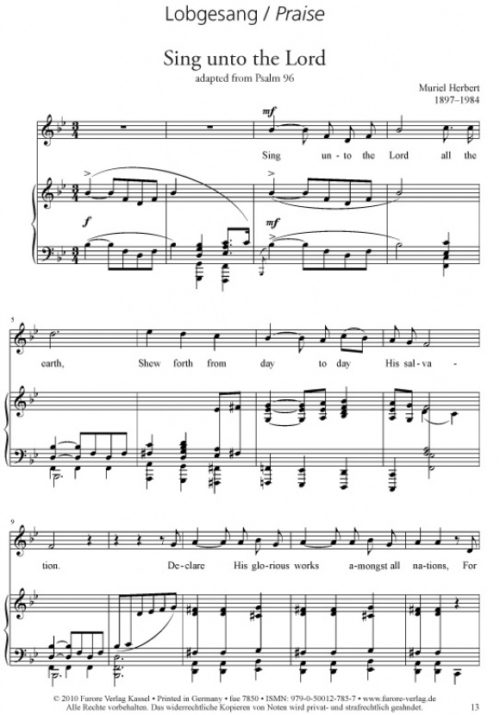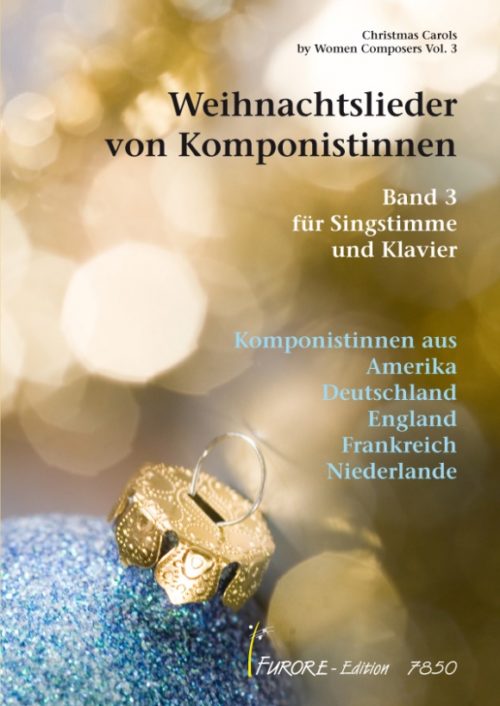This English composer and piano pedagogue was born in Sheffield. Her father, Frederick William Herbert was a schoolmaster and later an insurance agent, her mother Emily Godefroy was an accomplished amateur singer with sound knowledge of the theory of music. Her father died when she was just twelve years old. Muriel started composing from a young age and was greatly encouraged by her older brother Percy, a fine pianist himself, and Hugh Farrie, a Liverpool man of substance. The Eng-lish 20th century composer Roger Quilter not only gave Muriel support and encouragement but also introduced her to his publisher, Augener, who first published her in 1922. She attended at the Royal College of Music (RCM), London, from 1917 to 1920 as a holder of the Liverpool scholarship. There she studied Composition and Piano under Charles Stanford, later she studied Double Bass under Claude Hobday. From January to April 1921 she re-enrolled at the RCM as a fee paying student. At the end of her studies she was awarded the ARCM in Piano teaching. Herbert was an avid reader of not only the English romantic literary classics but also of earlier and contemporary writers. She married Emile Delavenay in 1928, a French scholar, professor at the University of Nice and an official of the United Nations, with whom she had two daughters. She was introduced to James Joyce who greatly liked her settings of his poetry to music. It was Joyce who encouraged her to submit her setting of Yeats’ poem “The Lake Isle of Innisfree” to Yeats for his approval. This he gave and the song became so popular in 1928 in Ireland that it is even listed in the Irish Traditional Music Archive in Dublin. Of her output of songs, of which there are more than ninety five in total, less than a dozen have been published. Her works for Violin and Orchestra are Enchanted Evening and Giboulee (conducted by Barbirolli). Towards the end of her teaching career, Muriel wrote two operas for schoolchildren: Come to the Zoo (1962) and Candy Floss (1964). Muriel’s style of writing is imaginative and varied, expressing text in colourful, appropriate ways and she draws frequently on the tonal language of French impressionism. Her craftsmanship presents the simple to the complex art song. Her accompaniments are refreshingly pianistic and well crafted, using dissonances only to underline life’s anguish and disharmonies expressed in the text. Muriel possesses a superb sensitivity to the relationships between music and text. Her songs are always well structured.
Produktkategorien zeigen


